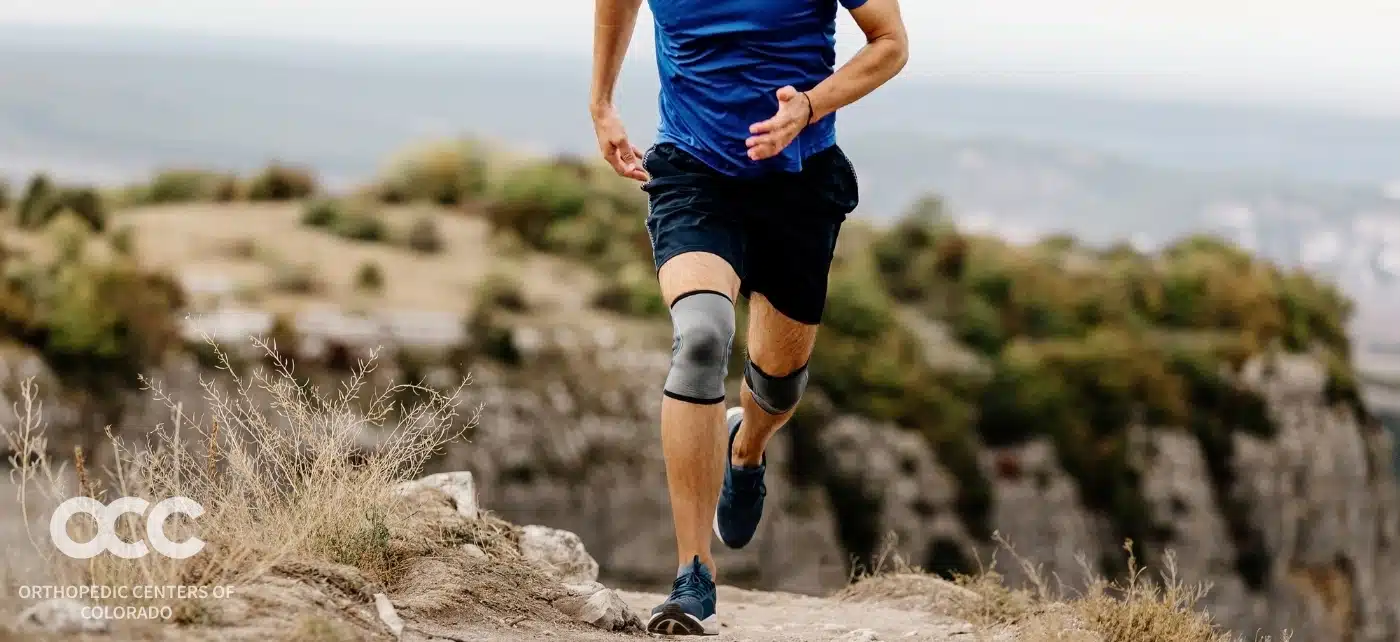The knee is one of the body’s most important physical features. You could not move your leg in any direction or perform routine actions such as standing, bending, or walking without it. Additionally, the knee supports the upper body’s weight and helps you remain upright. Considering the knee bears so many heavy responsibilities, it should not be surprising the knee suffers many injuries. One such occurrence is a condition known as runner’s knee, which in medical terms is called patellofemoral pain syndrome or PFPS. There are many causes and many complications that could affect your everyday life, so it is important to get it treated right away. The place to start and where you can trust you’ll get the best care is Advanced Orthopedic & Sports Medicine Specialists in Denver, Parker, or Aurora, Colorado.
OVERVIEW
Pain at the front of the knee is one of the most common knee problems. It is often a sign of overuse. In other words, the knee might have been exposed to too much or too frequent strain without being able to adapt to it fast enough. Patellofemoral pain syndrome is a broad term to describe pain in the front of the knee and around the kneecap. Although it can occur in non-athletes, it is often called “runner’s knee” because it is most common in people who participate in sports.
ABOUT THE KNEECAP
The kneecap (patella) connects muscles in the front of the thigh to the shinbone (tibia). As one bends or straightens the leg, the kneecap is pulled up or down. The movement of the kneecap is accommodated by a V-shaped notch (femoral groove) at one end of the thighbone (femur). The medial patella femoral ligament (MPFL)—located on the inside (medial side) of the knee—helps hold the kneecap in place and stop it from sliding/popping off the outer side (lateral side) of the knee. Several things can stop the patella from moving properly, all of which increase the forces and friction going through the kneecap, causing runner’s knee.
WHAT IS RUNNER’S KNEE?
Runner’s knee is one of the most common causes of front knee pain and accounts for approximately 25% of all knee injuries seen in sports injury clinics. While it is true that this is any injury that happens to virtually anyone, some risk factors may indicate the likeliness of developing problems:
- Lifestyle may be the first major risk factor. Professional athletes (especially in sports with a lot of running, jumping, and kicking) are at risk.
- Age is another huge factor. Adolescents and young adults are more likely to develop patellofemoral pain. In older people, it is usually arthritis that causes knee pain.
- Women (62% of cases) are at a significantly greater risk of experiencing patellofemoral pain syndrome than males (38%) due to anatomic factors and other issues such as running form. The pain from runner’s knee can develop differently over time. About half of those affected only have pain for a few weeks or manage to get it under control within a few months. In the other half, the pain lasts for several years or keeps coming back.
CAUSES
The main risk factor for pain around the kneecap is overuse. Activities that put a lot of strain on the front of the knee include jogging, mountaineering, skiing (especially when going downhill), going up and down stairs, and doing squats. Cycling sports can also lead to knee pain, especially cycling on hills, mountains, or using high gears. Overuse is more likely to occur if the activity is done for too long or too often and if the intensity is too great or increased too quickly. Research has shown that pain at the front of the knee often develops in beginners, competitive runners, and long-distance runners.
Other potential causes include:
- Malalignment of the kneecap
- Tight hamstrings or tight Achilles tendons
- Poor training techniques
- Abnormal foot position, such as flat feet
- Injury or trauma
- Weak thigh muscles
SYMPTOMS
The main symptom is pain, Pain in the front of the kneecap, though it could be around or behind it. Pain bending the knee to walk, squat, kneel, or run. Pain that worsens walking downstairs or downhill. Pain in and around the kneecap that happens when one is active. Pain after sitting for a long time with the knees bent. Other symptoms include a kneecap that is tender to the touch, a rubbing or grinding sensation, or a clicking sound of the kneecap when bending and straightening the knee. The symptoms of runner’s knee may look like other conditions and health problems.
NON-SURGICAL TREATMENTS
Treatment will depend on symptoms, age, and general health. It will also depend on how severe the condition is. Treatment may include:
- Strengthening exercises
- Stretching exercises
- Cold packs
- Elevating the leg
- Compression knee wrap
- NSAIDs, if needed, like ibuprofen or naproxen
- Shoe inserts (orthotics)
- Knee bracing
- Patellofemoral taping
WHEN IS SURGERY INDICATED?
Runner’s knee rarely requires surgery. The most common procedure performed is arthroscopy. During this process, the surgeon inserts a small device equipped with a camera inside the knee. They then use the images displayed to identify problem areas and make needed corrections. Specific corrections include debridement, in which damaged cartilage is removed from the kneecap. Another is lateral release. During this process, surgeons stretch surrounding tendons to readjust the ill-positioned kneecap or to remove bits of bone that are irritating it.
GETTING THE RIGHT DIAGNOSIS. GETTING THE RIGHT DOCTOR.
Runner’s knee can prove challenging to diagnose because its symptoms are like other knee issues. That’s why it’s imperative to use a surgeon that has had extensive training and experience in identifying runner’s knee and treating it correctly in a manner that won’t exacerbate the issue. You’ll find that orthopedic excellence at Advanced Orthopedics in Denver, Parker, or Aurora, Colorado. After an intensive physical exam, the surgeon may use diagnostic tools like X-rays, CT scans, or MRIs to confirm the diagnosis. This imaging could reveal associated underlying problems such as kneecap displacement, cartilage damage, or soft tissue inflammation. People heal at different rates. Your recovery time depends on your body and your treatment. But you can count on being caringly taken care of for as long as it takes. Book an appointment to see a knee specialist today.

















